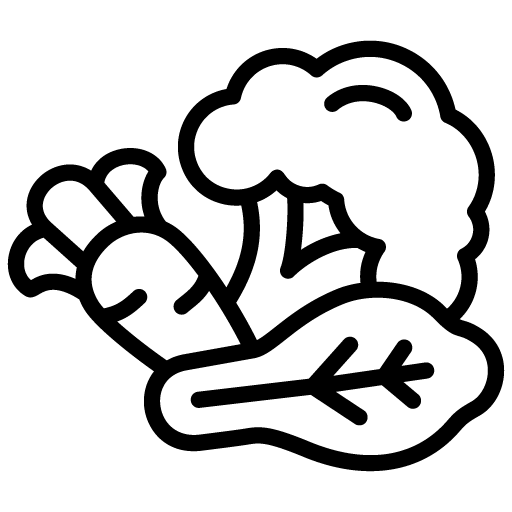Okay, we have talked about cholesterol and essential fatty acids…now let’s get into fat. I personally do not believe that fat deserves the bad rap it gets, actually quite the opposite.
What do fats do?
Fats are a necessary component of our diet. In addition to being heat source storage, they….
- are a major source of energy at 9 calories/gram
- provide padding and insulation for organs and nerves
- are essential in the absorption of our fat soluble vitamins
- the materials required for manufacturing our hormones
- are a source of essential fatty acids, etc..
Fats are the major component of our cells membranes, modulate the immune system, feed the heart, make up the brain, and some act as an antimicrobial, antiviral, and antifungal—but only when consumed correctly. Fats are great if—they are healthy fats, included as part of a balanced diet, and are protected against oxidation.
What are lipids, fats, fatty acids, and oils?
Lipids are compounds that are not water-soluble. They are found in the body as phospholipids, triglycerides (fats), and cholesterol. Fats may be solid at room temperature whereas oils are liquid.
The terms “fats” and “fatty acids” are often used interchangeably, but fatty acids are just sub-units of fats. Most of the fat in the body is stored as triglycerides. Triglycerides consists of any combination of any 3 fatty acids; saturated, monounsaturated or polyunsaturated—connected to a glycerol molecule.
A monoglyceride, on the other hand, only has one fatty acid connected.
What is the difference between saturated versus unsaturated fats?
All fats are made up of saturated and unsaturated fatty acids .
Saturated fats are chains of paired carbon atoms strung together liked a beaded necklace. It has an acid attached to one end and a hydrogen molecules on the other. The chain is “decorated” with hydrogen atoms. Saturated fats have all of the hydrogen atoms they can hold, therefore, they are “saturated” with hydrogen.
Whereas, unsaturated fats are missing pairs of carbon atoms in the chain and requires a link to hold it together. This creates a kink in the chain. It is the number of “kinks” that change the property of the fat.
Saturated fats
There are 3 types of saturated fatty acids: short chained (SCFA), medium chained (MCFA), and long chained chained (LCFA). Each plays a unique role in promoting health. Foods containing high percentage of saturated fats include animal products, palm and coconut oil, coconut, butter, rendered animal fats, chocolate, fish oil, cheese, nuts, meats, and whipped cream.
SCFAs
SCFAs contain 2-6 carbons in their chain. SCFAs are food but can also be produced by microbes in the large intestine through fermentation of fibers and resistant starches. In addition to their role in supplying energy to the colon and liver cells, they help regulate the immune system, affect the production of lipids, energy and vitamins, support appetite and cardiometabolic health, and affect the function of several organs, including the brain. SCFA include butyrate, acetate, and propionate and passively diffuse from the GI tract to liver.
MCFAs
MCFAs contain 6–12 carbons. Food sources that contain over 50% MCFAs include palm kernel and coconut oil. Like SCFA. MCFAs go straight to your liver, where they can be used as an instant energy source or turned into ketones. Ketones are substances produced when the liver breaks down large amounts of fat. In contrast with regular fatty acids, ketones can cross from the blood to the brain. This provides an alternative energy source for the brain, which ordinarily uses glucose .Because the calories contained in MCTs are more efficiently turned into energy and used by the body and less likely to be stored as fat.
LCFA
These fats have a chain of 13 to 21 carbons. Very long chain fatty acids (VLCFA) contain more more than 22. Longer chained fats fats are harder to absorb as they must be hydrolyzed into to fatty acids and monoglyceride before they can efficiently diffuse or be transported into the cell.
Unsaturated Fats
There are two types of unsaturated fats, monounsaturated an polyunsaturated fats. The type of unsaturated fat is distinguished by the number of “links” it has in the chain.
A monounsaturated fat has one “link”. They can be found in nuts, avocados, olive oil, peanut oil, and in some animal fat such as fig fat or lard.
Polyunsaturated fats are missing two or more pairs and contains multiple “links”. They are found in many common vegetable oils, such as corn, soybean, safflower and sunflower oil but, may not be the healthiest choice. Healthy polyunsaturated fats are called essential fatty acids and are converted by the body into EPA/DHA.
What are hydrogenated fats?
Hydrogenated fats are unsaturated fats that are processed to become solid at room temperature in order to protect against rancidity through a process called hydrogenation. Packaged and processed foods such as cookies, crackers, and margarine most commonly contain these types of fats.
Are seed oils healthy?
According to Ivor Cummings, the devil’s triad may be refined carbohydrates, sugars, and seed oils. Many health professionals believe industrial seed oils, such as highly processed oils from soybeans, corn, rapeseed (the source of canola oil), cottonseed, and safflower seeds may be one of the causes of the elevated levels of chronic disease we have experienced in the last 50+ years.
Chris Kessler brings up six main problems with industrial seed oils:
- The consumption of industrial seed oils represents an evolutionary mismatch.
- Eating industrial seed oils raises our omega-6-to-omega-3 fatty acid ratios, with significant consequences for our health.
- Industrial seed oils are unstable and oxidize easily.
- They contain harmful additives.
- They’re derived from genetically modified crops.
- When industrial seed oils are repeatedly heated, even more toxic byproducts are created.
Never before in our evolution, have we consumed so many of these “broken” fats. Linoleic acid, the primary fatty acid in industrial seed oils, accounts for 8 percent of our total calorie intake compared to our hunter–gatherer ancestor’s 1 to 3 percent of total calories.
Dr. Mercola is also extremely worried about reversing the ill effects of seed oil consumption. Unlike processed carbs whose effects on insulin and leptin resistance is easily reversible, “if you seek to eliminate this linoleic acid from your cells, it’s like a seven-year process. It doesn’t come out in a day or two, or a week, or a month. It takes seven years before you’re able to, because the half-life is so long, because it’s integrated into the cell membranes.”
So please careful of the oils you choose to consume to help limit the formation of potential chronic disease.
What the best sources of dietary fat?
This list is taken from the Westin A Price foundation…
- For Cooking
- Butter
- Tallow and suet from beef and lamb
- Lard from pigs
- Chicken, goose and duck fat
- Coconut, palm and palm kernel oils
- For Salads
- Extra virgin olive oil (also OK for cooking at very very low temps.)
- For Fat-Soluble Vitamins
- Fish liver oils such as cod liver oil (preferable to fish oils, which do not provide fat-soluble vitamins, can cause an overdose of unsaturated fatty acids and usually come from farmed fish.) I like them broken down into EPA/DHA.
- The following fats may cause health issues
- All hydrogenated and partially hydrogenated oils
- Industrially processed liquid oils such as soy, corn, safflower, cottonseed and canola
- Fats and oils (especially vegetable oils) heated to very high temperatures in processing and frying.
Why can heating certain fats be bad?
Vegetable oils contain mostly heat-sensitive polyunsaturated fats. When heated, these fats turn into toxic compounds including trans fat. So all of these oils may contain trans fat even if it doesn’t say so on the label.
Now, on the other hand, saturated fats can resist a heat-related damage called oxidation. Due to their shape, these fats have no room for oxygen to squeeze in. Monounsaturated fats, like olive oil, have room for only one oxygen to squeeze in so it may be okay to cook at low temps.
Polyunsaturated fats, on the other hand, have room for 2 oxygen molecules, making reactions not twice as nicely to occur, but billions of times more likely.
How much fat should I eat?
More controversy abounds! According to fat specialist, the late Dr. Jon Kabara, PhD, a suggested balanced diet for MOST people should be a balanced and healthy, low-calorie diet that includes a fat combination of 25% medium chained saturated, 57% omega-9 monounsaturated, 3% omega 3, and 15% omega 6. Complicated.
The Zone diet recommends a diet consisting of carbohydrates (40%), protein (30%), and fat (30%) whereas the Metabolic Typing Diet proponents believe that carbohydrate metabolic types require only 15% fat, 25% protein, and 60% carbohydrates. Keto experts believe that high fat consumption in amounts up to 75 to 95% of the diet.
According to the Institute of Medicine, the minimum amount of dietary fat humans require is around 20 percent of dietary intake.
Even though we all very metabolically different, if we had to propose a very generalized dietary approach, it would consist of an organic based balanced diet consisting of roughly protein (1/4 to 1/3), carbohydrates (2/3 to 3/4) in the form of non starchy vegetables and low carb fruit—combined with lots of fat consumed with every meal. As long fats are healthy, not oxidized or trans fats, we feel they can be consumed with abundance.
Are there circumstances when dietary fat should be limited?
Yes! Those whose gallbladder has been removed and those with familial hypercholesterimia, might want to consider supplementation to support lipid metabolism.
Others with issues with digestive enzymes, hypothyroidism, high cortisol levels, metabolic syndrome, metabolic acidity, GI issues, biliary stasis, fatty liver, immune issues, mitochondrial issues, low cofactor issues, etc. may need to determine their root cause to help alleviate fat metabolism issues.
What are healthy blood lipid levels?
Blood lipids must be evaluated with other markers to determine health. In addition to a standard lipid panel, we recommend a standard chemistry/lipid panel, homocysteine, CRP, fibrinogen, HA1c, fasting insulin, and thyroid panel to determine how fats are being utilized systemically.
It is important look for ratios between these markers, which is why we believe that actual values do not tell the whole story. As we age, we expect cholesterol levels to increase to keep up with the rigors of aging. In contrary to popular belief, high LDL values may indicate cellular repair and inflammation, not necessary the need for a statin drug. High values of HDL may not be as healthy as we are lead to believe and may indicate autoimmune issues among other things. In the office, we use functional blood chemistry analysis to determine cardiovascular risk and underlying root cause.
If lipid values are irregular, a VAP panel may be recommend to determine particle size which is a true risk factor as well as oxidation. Oxidative stress test may also be indicated for smaller LDL particle size.
How about supplements?
For those who choose to supplement with fish oil, please assure that it has been tested for contaminants and heavy metals and protected against oxidation during the processing so it does not become rancid.
Red yeast rice and other supplements may help control high cholesterol levels in lieu of a statin but mitochondria should still be supported. For those that go toward Keto, coconut oil or MCT can help the transition from carb to fat burning.
What can you do to improve your cardiovascular and other inflammatory disease risk?
Eating to control blood sugar levels, consume high-fiber, essential fatty acids, magnesium, a multivitamin, and vitamin D is a good place to start. Stay hydrated. Find and control sources of inflammation. Exercise will also help modulate blood sugar levels and improve insulin sensitivity.









